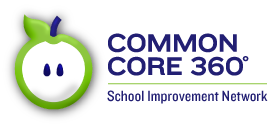Now that the emphasis is shifting to formative assessments and student learning, educational practices must also shift. This doesn’t just happen in the classroom, but it must be a school-wide integration. Administrators, for example, can expect a significant change in their day-to-day duties.
One of the many jobs of an administrator is classroom observations. Observations are viewed differently by different people and institutions, but the general purpose of classroom observations is to ensure that a teacher’s practices and techniques are effective. Now, with Common Core integration, an administrator must also observe how well a teacher integrates Common Core concepts and skills into their existing lesson plans. In order to do this, an administrator must know the Common Core well and have a good idea as to what Common Core lessons, effective formative assessments, and student mastery look like.
Administrators work long hours and may or may not work in the opportunity to closely scrutinize the Common Core standards, and even after doing so, he or she may not know what effective instruction in English language arts looks like versus the same in math. But, like most things in education, collaboration can help with the process.
Through professional learning communities (PLCs), teachers collaborate with one another to plan Common Core integration. At many institutions, a PLC will occur with each lesson and Common Core standard and as a team they will fortify an existing lesson to integrate the rigor and skills of the Common Core. Administrators should also be involved in these PLCs.
Of course, they don’t have to attend each PLC, but they should attend as many as possible. Together, in the PLCs, the administrators and teachers will gain a greater understanding of the Common Core vision, formative assessments, and student mastery. Together, they will develop standards-based lesson plans, formative assessments, and decide what student mastery looks like for a specific standard. Administrators play an active role in Common Core integration through PLCs.
Now, let’s go back to classroom observations. After attending a PLC, the administrator should observe the lesson that he or she helped the teacher develop. This way, the principal comes into the lesson more informed about the objectives, the assessments, and how to tell if students have learned. Suddenly, a classroom observation becomes much more effective and useful to teachers and administrators alike.
Lastly, as an administrator is participating in many PLCs in each department, he or she will gain insights into teaching across the content areas. With that rich knowledge, the administrator can suggest cross-curricular connections, suggest unique formative assessments that he or she has seen which the department hadn’t considered, and, of course, strengthen the professional relationship he or she has with teachers and students.
I have seen PLCs such as this in action. Both teachers and students become accustomed to frequent administrator visits. I have often seen principals helping with instruction, providing support to students with academic questions, and an environment that is well suited for optimal learning. Also, teachers view their administrators differently. They value administrators’ feedback more and they feel like the administrator truly understands what happens in the classroom.
